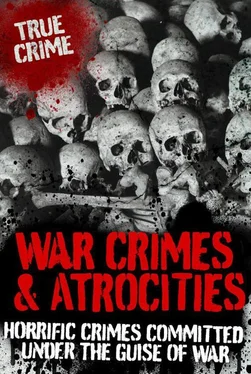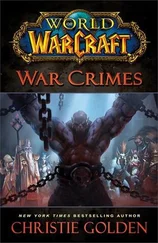GANG RAPES AT MONTE CASSINO
The Allied invasion of Italy was intended to liberate the country’s people from the yoke of fascist oppression, but instead many ordinary people met their deaths or were brutally raped and tortured in revenge atrocities that took place both in rural and urban areas. At Monte Cassino, the site of a sixth century Benedictine monastery, one such atrocity occurred when Allied troops, consisting mainly of North African soldiers, ran amok in the nearby villages, raping over 2,000 women there. No one was spared: girls as young as 11 and elderly women aged over 80 met with the same brutal treatment. In some cases, young girls were raped repeatedly by dozens of men. Villagers who tried to protect the women were attacked and many of them murdered: in total, about 800 men died. Not only this, but the villages were looted and razed to the ground.
In 1945, these same North African troops went on to commit similar crimes in Freudenstadt in the Black Forest region of Germany, where around 500 women were raped. In Stuttgart, they rounded up approximately 2,000 women and forced them into the underground, where they were repeatedly raped.
MASS MURDER
At Bretto, Partisan troops under the command of the Yugoslav communists captured the power station, which was being guarded by a group of Italian soldiers. The partisans ransacked the barracks where the soldiers were sleeping, rounding them up and forcing them to eat food contaminated with caustic soda and black salt. Realizing they were poisoned, the Italian soldiers begged for mercy, but were frogmarched up to an alpine retreat in the nearby mountains, where they were stripped and beaten. Many of them were attacked with pick axes in a senseless frenzy of bloodlust, their eyes being gouged out and their genitals cut off and stuck into their mouths. The Partisan troops were never prosecuted for the incident.
Elsewhere, Tito’s troops committed massacres of thousands of men, women and children, throwing their bodies into the ‘foibe’, deep valleys and crevasses in the mountains. The victims, all of whom were ordinary Italian civilians, were first forced to stand on the edge of the chasms, tied together with lengths of chains. The first few were machine-gunned to death, dragging the others with them as they fell into the chasms below.
The truth about these horrible crimes was suppressed for many years, mainly because some of the Partisans were Italian communists. However, in recent years there has been more honesty about what happened, and today, on Remembrance Day in Italy, the civilians massacred in the ‘foibes’ are honoured.
1939–45

During World War II, Poland was occupied by the Nazis and became the locus of some of the worst excesses of the regime. Initially, there was extreme persecution of the Jewish population, who were hounded into ghettoes, where many of them died from disease or starvation. Later, a huge number of Poles, both Jews and non-Jews, were sent to concentration camps, including Auschwitz, where they were tortured and murdered. (This was so widespread that virtually every family had a member who met their end in this way.) Yet others died from hard work, ill treatment and appalling living conditions. In total, around six million civilian Poles died during the war, about half of them Jews, while others struggled to survive in a nightmare situation. By the end of the war, the death count for the Poles was higher than any other nation in Europe.
Today, it is often said that, of all the nations of Europe – including Germany – it was Poland who really lost the war, in terms of having its land and its people completely decimated by the conflict. Despite contributing enormously to the defeat of the Nazis, Poland was eventually forced to give up 20 per cent of her territory under the Yalta agreement, causing many minority ethnic groups in these areas to become refugees. Not only that, but after the defeat of the Nazis at the end of the war, Poland was colonized by the Soviets, whose brutal communist regime continued until the 1990s, leaving the country ravaged by poverty and unemployment.
MASS EXECUTIONS
The German invasion began on 1 September, 1939, when over one million Nazi troops bombarded their way into the country, using ‘Blitzkrieg’ tactics of bombing defenceless civilians in cities, towns and villages. Although the Nazi arsenal was much more powerful than that of the Poles, the Polish army fought bravely to protect the country and inflicted a great deal of damage on the German troops. They also held off the enemy for much longer than any of the Allies had expected. However, on 17 September, when Soviet forces invaded from the East, the capital of Warsaw was forced to surrender, and shortly afterwards, the rest of the country followed suit. Many were forced to flee, and a government in exile was set up.
The victors, under the Nazi-Soviet pact, set about carving up the country between them. In the eastern Soviet zone, one-and-a-half million Poles, including women and children, were taken to labour camps in Siberia and other parts of the Soviet Union. Former Polish officers were executed by firing squads in forests around the country. In the German zone, the Nazis announced their intention to destroy the Polish race, along with the Jews, and began by dismantling the cultural structure of the country. Universities were closed down and Polish intellectuals were sent to concentration camps around Poland. One of the worst of these was at Oswiencim, renamed Auschwitz.
THE FINAL SOLUTION
Next, Polish Jews were rounded up and forced to live in ghettoes in the major cities, where they were deprived of basic commodities, such as proper food, clean water and decent shelter, and were forced to live in filthy conditions on the streets. Many were taken to concentration camps, such as those at Auschwitz and Treblinka, where they were gassed to death, along with non-Jewish Poles, gypsies, disabled people and others. In total, about four million Poles were exterminated at Auschwitz alone.
As the war progressed, 2,000 concentration camps were set up in Poland, mainly to service the program of extermination of the Jewish and Polish people. For most of the Polish population, the war years became a struggle for survival, whether inside or outside the camps. As well as being sent to the camps, Poles were transported to Germany to be used as slave labour. In addition, there were frequent revenge killings of ordinary civilians in both urban and rural areas, where citizens were rounded up and shot in reprisal for anti-German resistance activity. In hundreds of cases, whole villages were destroyed, along with their inhabitants.
However, despite this intimidation, the majority of Poles flatly refused to collaborate, unlike other countries, such as France, and continued to resist their invaders with an active underground force of around 400,000 individuals, who sabotaged the German regime at ever opportunity. Yet there were instances in which non-Jewish Poles participated in massacres of the Jewish people, such as that at Jedwabne, where over 1,000 Jews were tortured and beaten to death by the people of the town. The extent of Polish participation in such massacres, which occurred at towns all over the country, remains a controversial subject to this day, but it is clear that, of all the countries in Europe, Poland suffered the worst devastation of all, both at the hands of the Nazis and the Communists.
1940–45

The Warsaw Ghetto was established in 1940 as part of the Nazis’ programme of persecution against the Jews. Walled off from the rest of the city, it became the largest Jewish ghetto in Europe: as well as citizens from Warsaw itself, Jews from towns and villages all over Poland were brought in to live there. Food for the inhabitants of the ghetto was strictly rationed and was well below the levels that other Polish people received during the war and many people starved to death. In addition, medical and other social services were entirely lacking in the ghetto, and thus disease was rife.
Читать дальше













